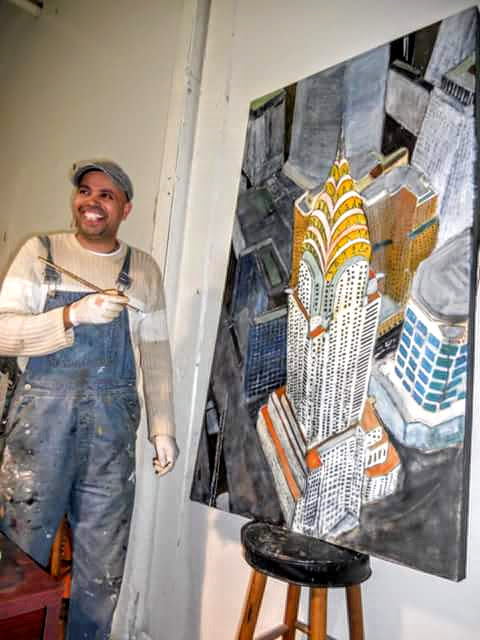Introduction:
Urban landscape painting is a genre that captures the dynamic and ever-changing scenery of cities. It offers a unique perspective on urban life, showcasing the beauty and energy found in bustling streets, towering skyscrapers, and charming neighborhoods. In this article, we will delve into the captivating world of urban landscape painting, exploring the techniques, styles, and artists who have made their mark in this genre.
Capturing the Essence of the City:
Urban landscape painting aims to capture the essence and spirit of a city, showcasing its architecture, culture, and people. Artists use various mediums such as oil, acrylic, watercolor, or pastels to create their vibrant and expressive works. Each brushstroke and color choice contributes to conveying the atmosphere and mood of a particular urban scene.
Techniques and Styles:
Urban landscape painting encompasses a wide range of techniques and styles. Some artists prefer a realistic approach, meticulously depicting every detail of the cityscape. Others lean towards impressionism, using loose brushstrokes and vibrant colors to convey the energy and movement of the city. Some may even experiment with abstract or mixed-media techniques, adding a contemporary twist to their urban landscapes.
Famous Urban Landscape Painters:
Edward Hopper: Known for his iconic portrayals of American urban landscapes, Hopper’s works, such as “Nighthawks” and “Early Sunday Morning,” capture the stillness and solitude of city life.
Claude Monet: Though mostly associated with his picturesque landscapes, Monet also painted urban scenes, particularly his series on London’s Houses of Parliament. His use of light and color brings a unique charm to these cityscapes.
Camille Pissarro: Pissarro’s urban landscape paintings, like “Boulevard Montmartre, Spring,” showcase his ability to infuse everyday scenes with a sense of liveliness and movement.
Richard Estes: Considered a pioneer of photorealism, Estes masterfully captures the reflection and details of urban scenes, making viewers feel as if they are looking at a photograph.
Benefits of Urban Landscape Painting:
Appreciation for the City: Urban landscape painting allows us to see cities in a new light, appreciating their beauty and uniqueness. It encourages us to explore and discover the hidden gems within our own urban environments.
Emotional Connection: City dwellers often have a strong emotional connection to their surroundings. Urban landscape paintings can evoke nostalgia, memories, and a sense of belonging, creating a deeper connection to the city.
Reflection on Urban Life: Through urban landscape painting, artists can reflect on the social, cultural, and environmental aspects of urban life. It raises awareness and encourages dialogue about the challenges and opportunities that cities present.
Conclusion:
Urban landscape painting is a captivating genre that showcases the beauty and energy of cities worldwide. From the vibrant streets of New York City to the charming alleyways of Paris, artists have embraced the challenge of capturing the essence of urban life through their brushstrokes. Whether you are an art enthusiast or simply curious about the world around you, exploring the world of urban landscape painting will open your eyes to the rich tapestry of urban environments and the artists who bring them to life.
see more of Habib Ayat’s artworks





I may like your website; however, I would like to bring your attention to the spelling errors present in several of your posts. While I find it extremely difficult to convey the truth, I will surely revisit your site.
certainly like your website but you need to take a look at the spelling on quite a few of your posts Many of them are rife with spelling problems and I find it very troublesome to inform the reality nevertheless I will definitely come back again
Your posts always provide me with a new perspective and encourage me to look at things differently Thank you for broadening my horizons
Your posts always provide me with a new perspective and encourage me to look at things differently Thank you for broadening my horizons
Your posts always provide me with a new perspective and encourage me to look at things differently Thank you for broadening my horizons
This is exactly what I needed to read today Your words have provided me with much-needed reassurance and comfort
Your writing is so eloquent and heartfelt It’s impossible not to be moved by your words Thank you for sharing your gift with the world
Your latest blog post was truly inspiring and had some great insights. I can’t wait to see what else you have in store.